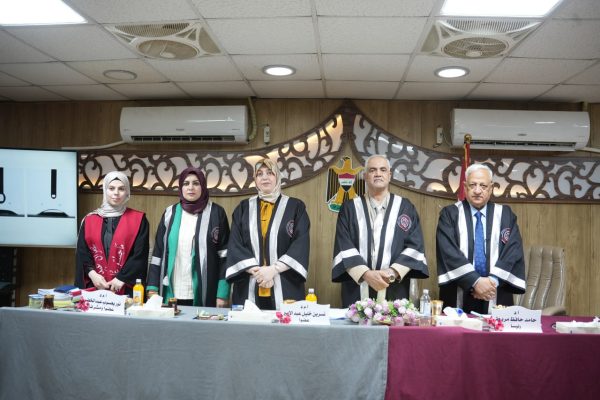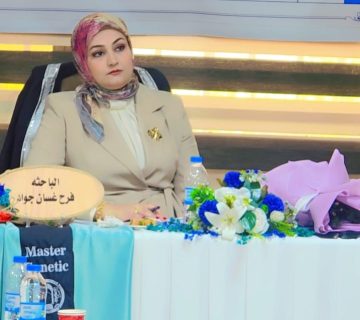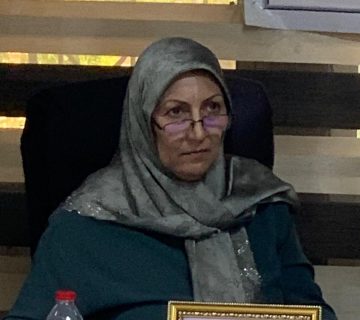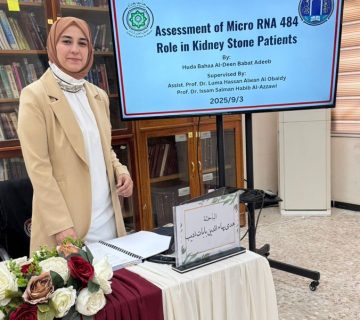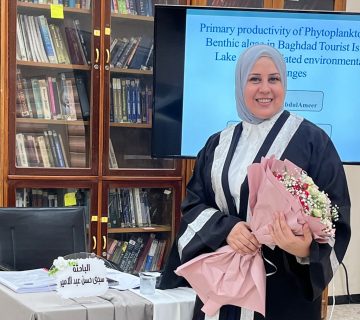Master Discussion
The master’s thesis, “Comparative Study Between (Cold Plasma & Laser Ablation) for Preparation of Si Nanoparticals and its antibacterial activity”” was the topic of discussion at the College of Science for women at the University of Baghdad.
Student: Ghofran Abdul Jabbar Abdul Sattar Muhammad
The main aims of this study are as follows:
Synthesizing SiNps using two methods (pulsed laser ablation and plasma jetting) and comparing their properties.Testing their antibacterial activity against S. auruua.
This study was conducted at the University of Baghdad, College of Science for Women, Department of Physics, and the practical experiments were also conducted at the Plasma Laboratory at the College of Science for Women in Baghdad. Laser ablation and plasma jetting have gained significant importance in the synthesis of nanoparticles (NPs) due to their high preparation efficiency. These techniques are sustainable, clean, and environmentally friendly, as they do not require harmful chemicals and involve unique chemical reactions that produce nanoparticles with novel and innovative properties. The material produced by both methods is characterized by its high purity compared to conventional chemical methods, and these techniques allow for a variety of shapes and sizes. In this work, two physical methods (pulsed laser ablation and cold plasma) were used to synthesize silicon nanoparticles. These are two novel methods for producing silicon nanoparticles, prepared from a silicon block immersed in deionized water. First, pulsed laser ablation is used with different numbers of shots (250, 500, and 1000) pulses, and second, plasma jet with different exposure times (3, 5, and 7) minutes. The produced silicon nanoparticles were examined using several methods, including UV-Vis analysis, X-ray diffraction (XRD), energy-dispersive X-ray spectroscopy (EDS), atomic force microscopy (AFM), scanning electron microscopy (FE-SEM), zeta potential, and contact angle analysis, and their activity against S. aureus was studied.
The most important recommendations which the study has come up with and the average obtained:
- Using an environmentally friendly method to prepare silicon nanoparticles and employing them in self-cleaning.
- Using pulsed laser ablation (PLA) technology to prepare other elements such as zinc and nickel and compare it with the plasma method.
- Since silicon-based nanomaterials synthesized using laser ablation have properties similar to those obtained through chemical and biological processes, it would be useful to synthesize similar materials using all three methods and evaluate their effects on different bacterial strains.
Excellent grade.
